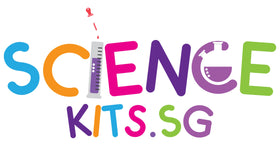
The Benefits of Group Science Projects: How to Use Kits for Collaborative Learning
Collaborative learning through group science projects is an effective way for students to engage deeply with scientific concepts while also developing essential teamwork skills. Science kits are a powerful tool in this context, offering structured yet flexible resources that cater to group activities. Let’s explore the benefits of using science kits in group projects and how they can elevate the learning experience.
1. Encourages Active Participation
Group science projects require students to actively engage, contributing their ideas and skills toward a common goal. Science kits simplify the process by providing clear instructions and the necessary materials, enabling students to jump into the hands-on activities with ease. As they work together, each member can take on different roles—whether it’s assembling components, analyzing results, or documenting findings—ensuring that everyone participates.
2. Promotes Critical Thinking and Problem-Solving
When students collaborate, they are more likely to encounter diverse viewpoints and ideas. Group discussions about how to approach the project help foster critical thinking, as students evaluate different strategies and decide on the best course of action. Science kits often introduce challenges that require creative problem-solving, encouraging students to experiment, hypothesize, and refine their approach together.
3. Develops Communication and Leadership Skills
Communication is key in any group project. Students must clearly express their thoughts, listen to others, and coordinate tasks efficiently. Science kits provide a natural platform for practicing these skills, as students discuss instructions, share observations, and plan the steps needed to complete the experiment. Some members may take on leadership roles, guiding the group or delegating tasks, allowing for the development of leadership qualities in a collaborative environment.
4. Makes Learning Fun and Engaging
Science can sometimes be seen as an intimidating subject, but science kits make learning enjoyable. By turning abstract concepts into tangible, hands-on experiments, students are more likely to be excited and engaged. When working in a group, the fun is amplified, as students share discoveries, troubleshoot issues together, and celebrate their success as a team.
5. Enhances Social and Emotional Learning (SEL)
Group science projects also promote important social and emotional learning (SEL) skills. Through collaboration, students learn how to work effectively with others, resolve conflicts, and show empathy. The experience of achieving a common goal as a team helps build camaraderie and trust, which are key aspects of SEL.
6. Tailored for Differentiated Learning
Science kits often come with varying levels of complexity, making them suitable for different age groups and learning abilities. This flexibility allows educators to design group projects that accommodate diverse learning needs. More advanced students can take on complex tasks, while others might focus on simpler components, ensuring that all members contribute meaningfully according to their strengths.
7. Reinforces Knowledge Retention Through Collaboration
Studies show that teaching others is one of the most effective ways to solidify one’s understanding of a topic. In a group setting, students often explain concepts to each other, reinforcing their own knowledge. Science kits provide structured activities that naturally encourage peer teaching and collaborative learning, leading to better retention of scientific concepts.
Tips for Using Science Kits in Group Projects
- Assign Roles: To keep the group organized, assign roles like project manager, materials handler, recorder, and presenter.
- Encourage Reflection: After completing the project, have students reflect on their process, discussing what worked well and where they can improve.
- Rotate Leadership: Rotate leadership roles in different projects to give each student the opportunity to develop their leadership skills.
Conclusion
Group science projects using kits provide a multifaceted learning experience that goes beyond academics. They build teamwork, boost problem-solving abilities, and create a fun, hands-on environment where students can thrive together. By incorporating science kits into group projects, educators can spark curiosity, encourage collaboration, and nurture essential life skills in their students.
